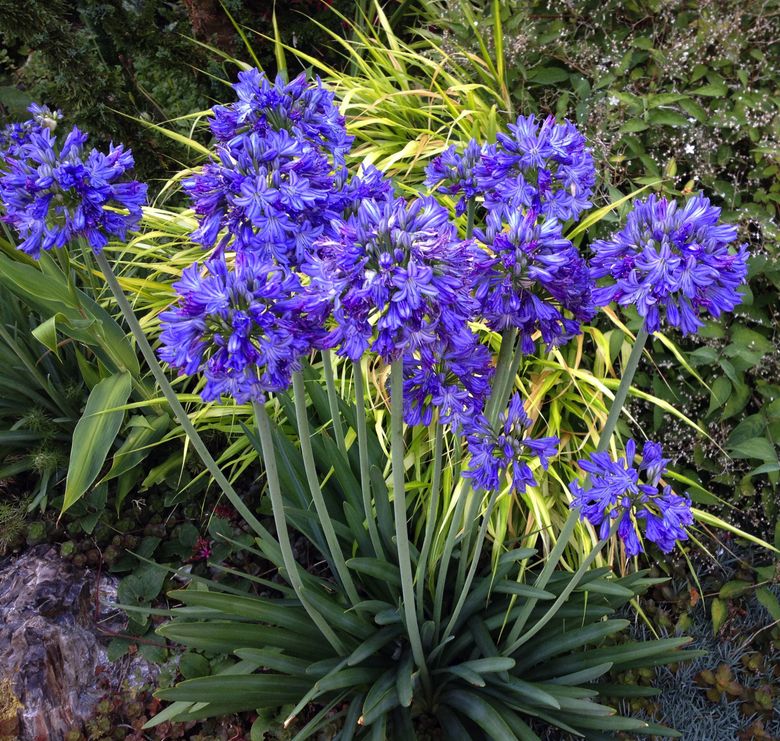Agapanthus Proliferation: Tips for Expanding Your Plant Collection
Wiki Article
Mastering the Art of Agapanthus Care: Essential Actions for Healthy Growth and Vivid Flowers
In the realm of horticulture, the growing of agapanthus stands as a gratifying venture for those that look for to support these classy flowering plants. With their striking blooms and elegant foliage, agapanthus has actually recorded the attention of garden enthusiasts worldwide. Nonetheless, attaining ideal development and vibrant blooms needs a nuanced strategy that encompasses different vital actions. From choosing the right selection to grasping pruning methods, the journey in the direction of growing flourishing agapanthus plants is complex and holds the vital to unlocking the complete possibility of these herb gems.
Choosing the Right Agapanthus Selection

When choosing the appropriate Agapanthus range for your garden, take into consideration aspects such as climate viability, flower color, and development practice. Furthermore, consider the climate in your area to guarantee the Agapanthus selection you select can thrive in your certain conditions. Comprehending the growth practice of different Agapanthus ranges is crucial for correct placement within your garden.
Perfect Planting Problems
Considering the optimum ecological needs is necessary for successful Agapanthus cultivation. Agapanthus flourishes in well-draining soil with a somewhat acidic to neutral pH level. When growing, pick a location that obtains complete sunshine to partial shade. In hotter environments, offering some mid-day shade can prevent scorching of the fallen leaves. Agapanthus plants are sensitive to cold temperature levels and must be secured from frost during winter season months.To make certain healthy growth and dynamic flowers, plant Agapanthus bulbs at a depth of concerning 2-4 inches and space them 8-12 inches apart. Mulching around the base of the plants aids maintain moisture and subdues weed growth.
Watering and Feeding Tips
Keeping correct moisture degrees and providing crucial nutrients are vital aspects in the treatment program for Agapanthus plants. When it comes to sprinkling Agapanthus, it is critical to strike a balance. These plants like continually damp dirt but are prone to root rot if overwatered.Fertilizing Agapanthus is important for advertising healthy and balanced growth and prolific blooms. Use a balanced fertilizer, such as a 10-10-10 formula, in the very early spring as new development arises. Repeat this application every 6-8 weeks throughout the expanding period. Avoid excessive fertilization, as it can cause rich vegetation at the expenditure of flowers. Constantly follow the supplier's instructions for appropriate dilution and application approaches. By adhering to these watering and fertilizing tips, you can guarantee your Agapanthus plants prosper and generate lively, resilient blooms.
Trimming Strategies for Agapanthus
Pruning Agapanthus plants at the ideal times and with appropriate techniques is essential for maintaining their health and wellness and promoting optimum development and blooming. The perfect time to prune Agapanthus is in late winter months or early spring prior to brand-new growth emerges.Deadheading invested flowers can likewise redirect the plant's energy into generating more flowers rather than establishing seeds. If you desire to gather seeds for proliferation, leave some blossoms to mature and completely dry on the plant.
Bear in mind to use tidy, sharp tools to make exact cuts and decrease the danger of introducing illness. Agapanthus. Routine pruning will aid maintain your Agapanthus looking healthy and cool while guaranteeing a plentiful screen of lovely blooms
Dealing With Typical Parasites and Conditions
After guaranteeing appropriate pruning methods for Agapanthus, it is necessary to resolve typical pests and illness that can influence the health and vigor of these plants. One common bug that influences Agapanthus is the Agapanthus gall midget.One more typical issue is fungal leaf spot, which presents as dark lesions on the leaves. To stop fungal illness, make certain good air blood circulation around Bonuses the plants, avoid overhead watering, and get rid of any type of infected fallen leaves without delay. In addition, Agapanthus plants can experience origin rot if they are grown in poorly draining pipes dirt. To stop this, plant Agapanthus in well-draining dirt and prevent overwatering. By being cautious and taking timely activity against illness and parasites, you can assist your Agapanthus plants thrive and produce dynamic blossoms.

Verdict
In final thought, understanding the art of agapanthus treatment entails picking the best variety, offering suitable growing problems, proper watering and fertilizing, ideal trimming techniques, and dealing with typical bugs and illness. By adhering to these vital navigate to this website steps, you can guarantee healthy and balanced growth and vibrant flowers for your agapanthus plants. Bear in mind to frequently keep track of and preserve your plants to advertise their total wellness and long life.To make certain healthy and balanced growth and vibrant blossoms, plant Agapanthus light bulbs at a deepness of regarding 2-4 inches and area them 8-12 inches apart. By learn this here now following these watering and fertilizing pointers, you can guarantee your Agapanthus plants flourish and create lively, durable blossoms.
One typical bug that impacts Agapanthus is the Agapanthus gall midget. Furthermore, Agapanthus plants can suffer from origin rot if they are planted in inadequately draining soil. By following these vital actions, you can guarantee healthy growth and vibrant flowers for your agapanthus plants.
Report this wiki page